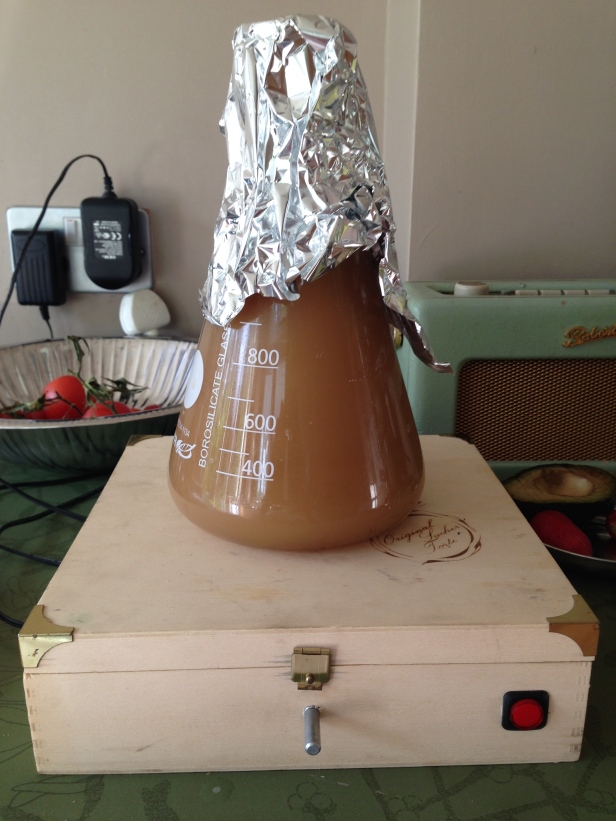I once made a batch of lager which developed phenolic off-tastes. Initially I thought this was due to not rinsing chlorine based cleaning agents sufficiently. However, this was not the case since I tend not to use these and I always rinse with hot water (4 times). Instead, wild yeast got to ferment the batch. I under-pitched this batch and the lag time for fermentation to take off was several days. This is enough for wild yeast to get a foothold and contaminate the wort. I had no other choice but to discard this batch.
Lesson learned.
So, how much yeast should one pitch?
In Chris White’s book, Yeast, he outlines the following formula:
(pitching rate) x (mm of wort) x (degrees Plato of wort) = cells needed
For lager beers the pitching rate is given as 1.5, whereas for ales it is 0.75 million cells per mm of wort. Thus, for my lager the equation looks as follows
1,500,000 x 25,000 x 12.7 = 476 billion cells
White Labs vials have about 100 billion cells, which is 4 – 5 vials. That’s quite expensive…
However, he added that when working with laboratory cultures, one can use up to 50% less. The formula is for re-pitching harvested yeast. Phew!
This now gets us in the ball park of the generally recommended 2 vials per 20l batch. It’s a little more because my batch is a bit larger.
But I don’t want to purchase another vial, and I haven’t got one either. It’s time to grow (propagate) my own yeast.
Thankfully I build a magnetic stir plate from the box of a “Sachertorte“, a few magnets and the fan from a computer. This is perfect for oxygenating yeast as well as keeping it moving throughout. This is good for achieving high yields. Simply covering the flask with sanitized aluminium foil is sufficient. Yeast and bacteria cannot crawl and it’s important for releasing CO2 as well as a bit more air in whilst stirring.
Unfortunately my Erlenmeyer flask is only 1 litre. If you are considering to buy one, I strongly suggest to go for larger volume ones. The chart in his book lists the extra cell count as 50 billion with an inoculation rate of 100 billion in 1 litre of wort. Time to make a stepped starter then (ugh). This means stepping the starter 3 times which will nearly take a whole week! Yikes.
Ok, I’ll take this hurdle. It’s a strain I haven’t used before and I am dead curious what flavours it gives…
There is an easier, and more cost-effective way of doing this going forward. Remember “Drauflassen“? This is a technique used in many Bavarian breweries where the wort is spread over several fermenters, then the yeast is pitched and the next wort added to the already fermenting beer. Effectively, the fermenter is now a vessel with a huge starter culture where the yeast is at high Kräusen. The advantage of this are many folds. The resulting mixing of the wort helps level out any small variations – which helps consistency, and adding the new wort to a fermenter where the yeast is already in its most active state results in a much faster fermentation of the latter. It’s also more cost-effective because less yeast will need to be pitched and there won’t be a need to create a huge starter.
My fermenter is 65l, which means I can easily top it up with 3 x 20l batches without having to make a huge starter or invest in a lot of pitchable yeast.
Genius!


I’ve done my whole line of lagers this year using this technique. Simple and economical, let the yeast do the work!
LikeLike